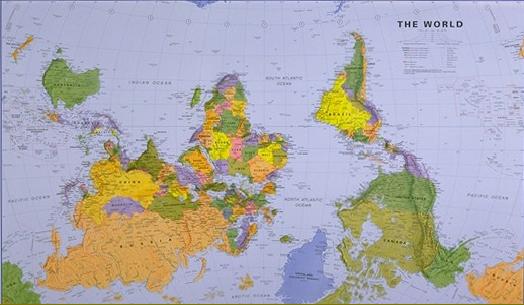Serendip is an independent site partnering with faculty at multiple colleges and universities around the world. Happy exploring!
Science and a Sense of Place: Locating Ourselves in the World
Science and a Sense of Place:
Locating Ourselves in the World
(July 23-August 3, 2007)
|
(Elizabeth Bowen of Dublin, Ireland, 1899-1973) "What aspects of their world do our kids care about?" (Randal Holly of Thomas Edison/John Fareira High School, Philadelphia, 2005) |
Welcome to the home page of a Summer Institute on "Science and a Sense of Place" held at Bryn Mawr College in 2007. Like others in the series, this Institute is designed to bring together college faculty and K-12 teachers to discuss current understandings of about teaching hands-on science throughout the curriculum. The Institutes are sponsored by Bryn Mawr College and the Bryn Mawr/Haverford K-16 Collaborations in Science and Mathematics Education with support from the Howard Hughes Medical Institute.
Photo Gallery
- Group Photo : Check out the cosmic coordinates!
- Photo Gallery One: Introducing Us and Maps Locating Us in the World
- Photo Gallery Two: All of Us Go Outside
- Photo Gallery Three: All of Us Dissect Sheep Brains
- Photo Gallery Four: We Search for Homologies for Ourselves
- Photo Gallery Five: We Make Changes and Observe Them
- Photo Gallery Six: Finale--Presentations and Graduation
Weekly Schedule
Geology 259, Park Science Building
Daily Schedule
| 8:30-9 Coffee and Breakfast Snacks |
| 9-10:30 Session with Guest Facilitator |
| 10:30-10:45 Coffee Break |
| 10:45-12 Session continues |
| 12-1 Lunch |
| 1-2:30 Implications and Applications: What Can we Do with What We've Learned This Morning? |
| 2:30-2:45 Break |
| 2:45-4 Continuing with Implications and Applications |
|
|Science and a Sense of Place | Bryn Mawr College Summer Institutes for K-12 Teachers | Serendip Home |




Comments
Sci & Sense of Place 07 Institute Report for June 2008
Larger Report to be sent via e-mail, summary to follow below:
Use of WebQuests to gather information was too time intensive for both students and teachers. I collected photo-stories of the inquiry-based projects and found that both groups were more interested in viewing active science rather than reflect on their own thinking process.
Most successful were video clips that displayed goals and process. My next step is to incorporate a viewer reflection or comment that can give information on their thinking and new idea generation.
Joyce Hubert-Theriot
Rustin High School
New Resource
Here: is a great opportunity for all teachers- and it's free
Bucket Brigade Introduction Do you want to know how to find out what you are breathing and if there is a link between pollution and health problems? The "Bucket Brigade" is a simple, but effective, tool that dozens of communities are using to find out for themselves what chemicals are in the air. Armed with their own data and information about the health effects of chemicals, these communities are winning impressive reductions of pollution, safety improvements and increasing enforcement of environmental laws. Photo of Bucket Device The "Bucket Brigade" is named for a easy to use air sampling device housed inside a 5 gallon plastic bucket. The "Bucket" was developed in Northern California in 1995 by an environmental engineering firm in order to simplify and reduce the costs of widely accepted methods used for testing toxic gases in the air. Denny Larson, formed the Global Community Monitor in 2002, helped to develop the buckets and has worked with many communities on establishing successful air testing programs. The Global Community Monitor can help your community start a Bucket Brigade to find out what you are breathing and fight back for clean air. Home » Take Action » Volunteer Volunteer VOLUNTEER NOW. Here's how you can help.. Volunteers are needed to do web, research, writing, fundraising and investigative work. We have partners in 17 countries in and many US States that need assistnace with their campaigns for justice and a clean environment. Please contact our office at info@gcmonitor.org to inquire about volunteer opportunities.
History through the Place
This morning's session with
Tin Whistle
Two headed creatures- Middle school students
Opportunity for Teachers
Great Resources for Teachers
Everyone needs to use www.abesbooks.com to search for the cheapest used books
in any subject
Everyone should Google "Grant Wrangler" which will lead to an amazing site which is a treasure trove for available grants for teachers
If you haven't been to The Wagner Free Institute of Science, you haven't treated your students the way they deserve! www.wagnerfreeinstitute.org/
Make sure we see all of you at The Franklin Institute's Teacher Night Out
this fall.. www.fi.edu/
Take your groups to The Philadelphia Water Department's Fairmount Waterworks Interpretive Museum www.fairmountwaterworks.org/about.php?sec=3
July 23, 2007
Monday's comment!!
Population Density
science and a Sense of Place
Introduction- Ben's
More introductions
Introduction
Introduction - Tori's
Introduction to Syreeta Bennett
Post new comment